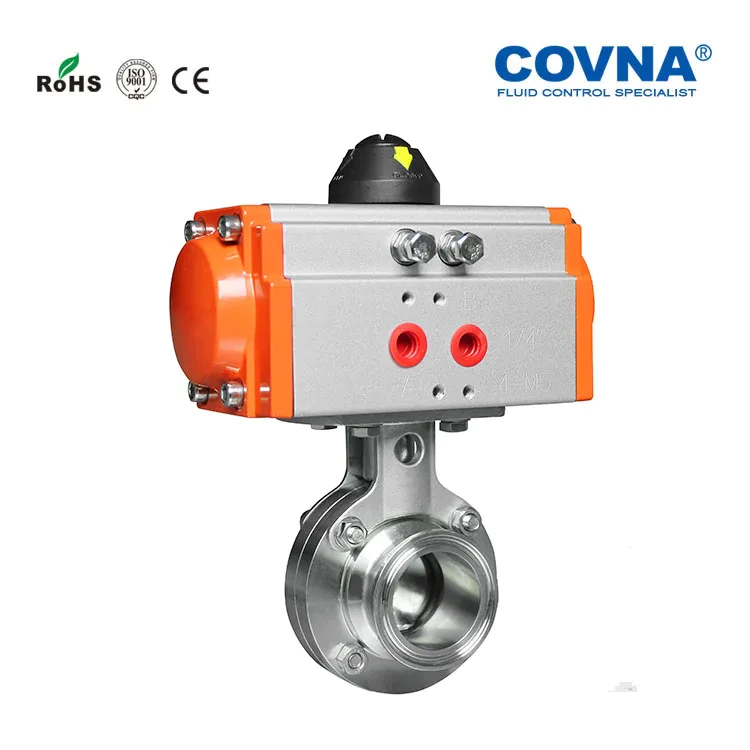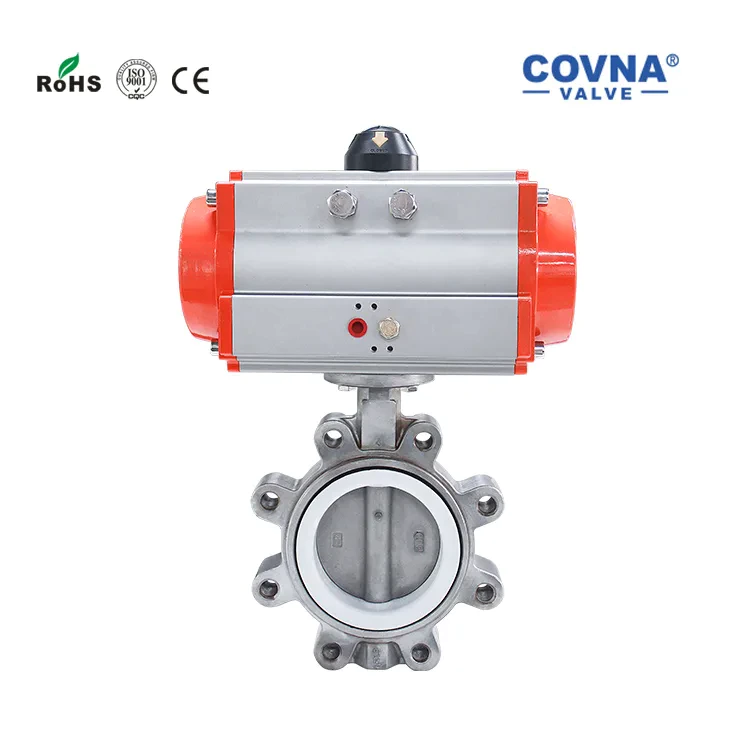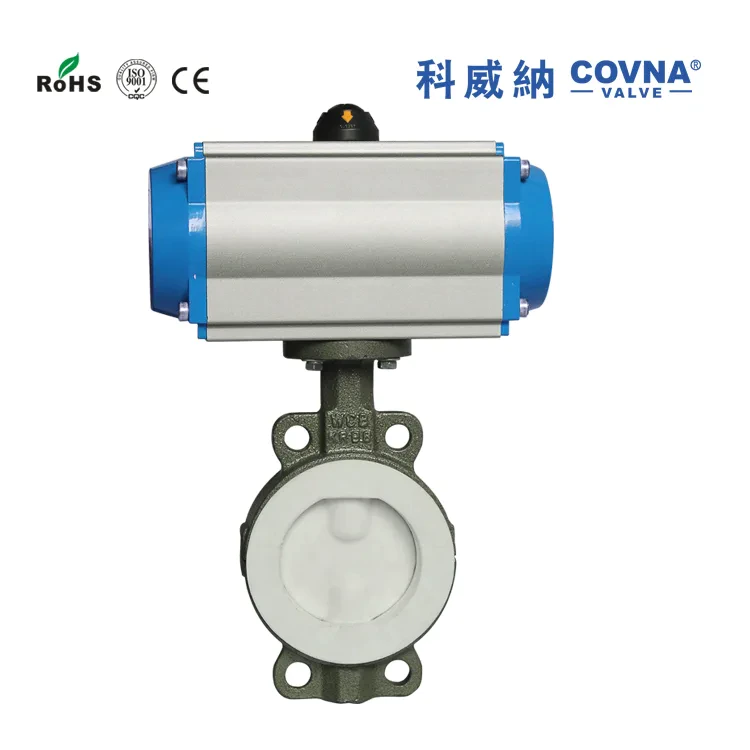Products
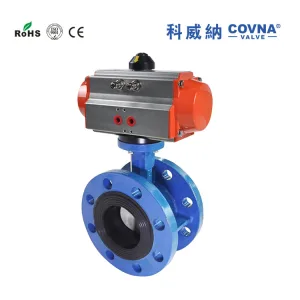
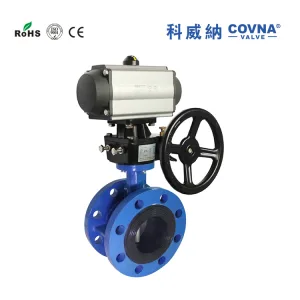
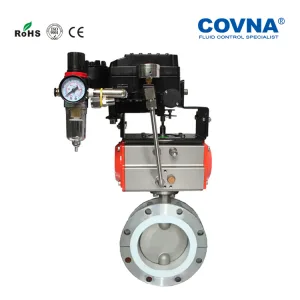
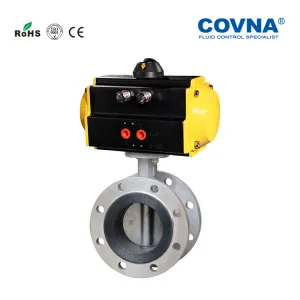
COVNA D641F Pneumatic Flange Butterfly Valve - Operating Manual
According to the sealing performance, pneumatic butterfly valves can be divided into metal seal and soft seal types. Advantages of pneumatic butterfly valves over other types of valves may include: compact structure, miniature size, long service life, good sealing performance, easy maintenance, quick detachable and installation.
Introduction
According to the sealing performance, pneumatic butterfly valves can be divided into metal seal and soft seal types. Advantages of pneumatic butterfly valves over other types of valves may include: compact structure, miniature size, long service life, good sealing performance, easy maintenance, quick detachable and installation.
Pneumatic Actuator
| Type | Function |
| Double Acting | Air to open, air to close, air supply failure keeps current position. |
| Single Acting N/O | Air to open, interrupt air to close, air failure closes. |
| Single Acting N/C | Air to close, interrupt air to open, air failure opens. |
| Optional Accessories | Solenoid valve, limit switch box, air filter regulator, positioner, manual override, lock-up valve. |
Technical Parameters
| Component | Details |
| Size Range | DN50-DN600 |
| Body Material | SS (Stainless Steel), CI (Cast Iron), Ductile Iron, WCB (Carbon Steel) |
| Seat Material | NBR, EPDM, VITON, PTFE |
| Disc Material | Stainless Steel |
| Stem Material | Stainless Steel |
| End Connection | Flange |
| Operating Pressure | PN10/PN16 |
| Applicable Media | Water, Air, Gas, Oil, Liquid, Steam |
| Structure | Midline Structure / A-type |
Maintenance
- Tightening the seal between the valve and the actuator:
Remove the four bolts underneath the actuator. Separate the actuator from the valve.
Tighten the nut on the top of the valve body.
Place the actuator back on the valve and screw everything back into place.
- Tightening the seals between the valve and the inlet/outlet ports.
Remove the torque bolts and check for any debris or damage to the gaskets.
Use a torque wrench or other consistent method of tightening the torque bolts to reconnect the inlet and outlet ports.
Pneumatic Actuator Specifications
Operating Media: Dry/lubricated air or non-corrosive gases (max particle size <30µm).
Air Pressure: Min 2.5 Bar, Max 8 Bar.
Temperature Range:
Standard: -20°C to +80°C
Low: -35°C to +80°C
High: -15°C to +150°C
Common Faults & Troubleshooting
| Failure Phenomenon | Inspection Items | Solution |
| Pneumatic Valve Cannot Move | Solenoid valve/coil status, cylinder seals, valve spool impurities, supply pressure | Replace damaged parts, clear impurities, increase pressure (0.4–0.7MPa). |
| Slow Motion/Crawling | Output torque, valve tightness, air pipe blockage, power line issues | Adjust torque, clear blockages, check electrical connections. |
| Component | Details |
| Size Range | DN50-DN600 |
| Body Material | SS (Stainless Steel), CI (Cast Iron), Ductile Iron, WCB (Carbon Steel) |
| Seat Material | NBR, EPDM, VITON, PTFE |
| Disc Material | Stainless Steel |
| Stem Material | Stainless Steel |
| End Connection | Flange |
| Operating Pressure | PN10/PN16 |
| Applicable Media | Water, Air, Gas, Oil, Liquid, Steam |
| Structure | Midline Structure / A-type |
